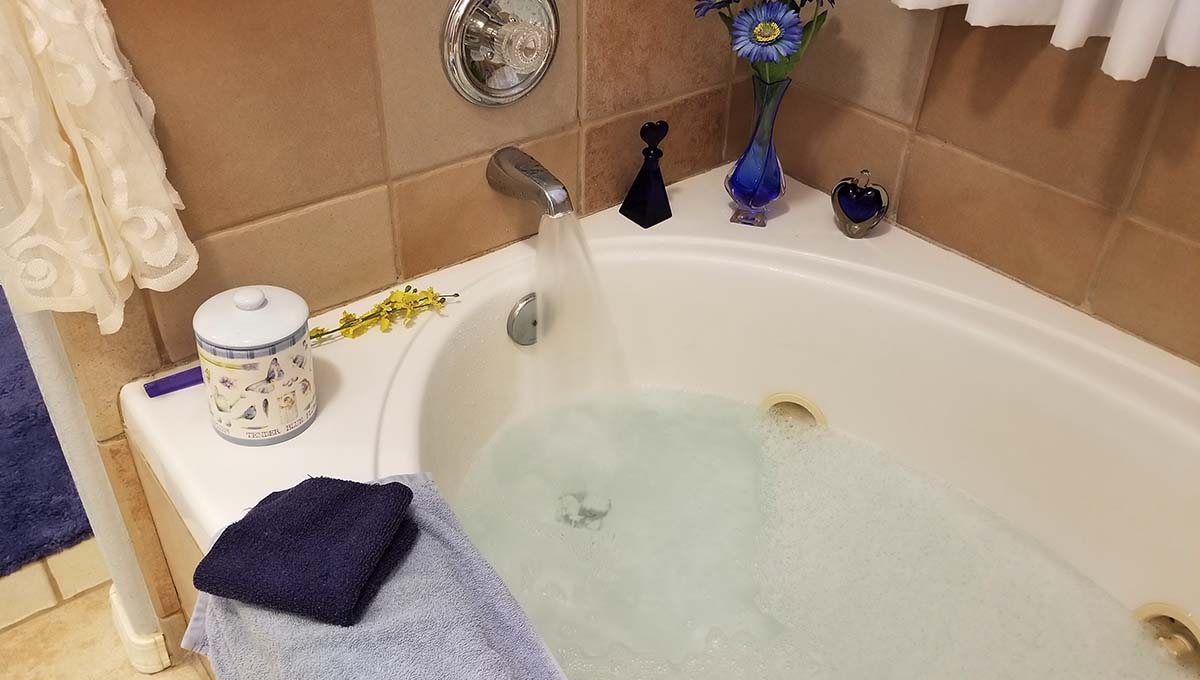5 Common Reasons Your Bathtub Won't Drain: Troubleshooting Guide
Hair and Soap Residue Buildup
One of the primary culprits for a clogged bathtub drain is the accumulation of hair and soap residue over time. As you use your bathtub, loose hair and soap scum are washed down the drain, gradually forming a blockage. This blockage restricts water flow and leads to slow drainage or a complete backup.
Solution: Regular Cleaning and Maintenance
To combat hair and soap residue buildup, it is essential to perform regular cleaning and maintenance.
Start by using a pair of gloves and a flashlight to inspect the drain for any visible blockages. If you notice any hair or debris near the surface, carefully remove it using a pair of tweezers or a drain snake. When we visit homes with clogged bathtub drains, most are caused by hairs that wrap around the drain cross bars.
A couple of minutes of using needle nose pliers almost always does the trick.
Try using a mixture of baking soda and vinegar for a more thorough cleaning. Pour half a cup of baking soda down the drain, followed by half a cup of vinegar. Let the mixture sit for about 15 minutes, then flush it with hot water. This natural solution helps break down the buildup and restore proper water flow.
Foreign Objects in the Drain
Another common reason for a bathtub drain blockage is the presence of foreign objects. Accidentally dropping items such as jewelry, toys, or bottle caps into the drain can obstruct the water flow, leading to drainage issues.
Solution: Removing Foreign Objects
If you suspect there may be foreign objects causing the blockage, it is crucial to remove them promptly. Begin by using a flashlight to locate the object inside the drain. Carefully use a pair of long-nose pliers to retrieve it if it’s within reach. Be cautious not to push the object further into the drain.
If the object is out of reach, it is advisable to seek professional assistance from a licensed plumber. They have the expertise and tools necessary to safely extract the foreign object without causing further damage.
Faulty or Clogged Drain Mechanism
The drain mechanism, including the stopper or strainer, can become faulty or clogged over time, hindering proper water flow. This issue commonly occurs due to the accumulation of debris or mechanical malfunctions.
Solution: Clean or Replace the Drain Mechanism
To address a faulty or clogged drain mechanism, start by removing the stopper or strainer from the drain. Inspect it for any signs of damage or excessive debris. If cleaning the stopper doesn't resolve the issue, consider replacing it with a new one.
Refer to the manufacturer's instructions or consult a professional plumber for guidance on replacing the drain mechanism. Choosing a high-quality replacement part ensures optimal functionality and long-lasting performance.
Plumbing Vent Issues
A bathtub drain problem may also be attributed to plumbing vent issues. Plumbing vents equalize pressure in the plumbing system and facilitate proper drainage. When vents become clogged or blocked, it can lead to slow or inefficient draining.
Solution: Clearing the Plumbing Vents
Clearing the plumbing vents requires climbing onto the roof, so it is recommended to hire a professional plumber to handle this task. They will identify the vent location and use specialized tools, such as a plumbing snake or high-pressure air blower, to remove any obstructions.
By clearing the plumbing vents, you restore proper airflow and ensure efficient drainage from your bathtub.
Pipe Blockages or Damage
In some cases, a persistent bathtub drain problem may indicate blockages or damage within the plumbing pipes themselves. Over time, pipes can accumulate debris and mineral deposits or even suffer from corrosion or cracks, impeding water flow and causing drainage issues.
Solution: Professional Inspection and Repair
When dealing with pipe blockages or damage, it is crucial to seek professional assistance from a licensed plumber. They will thoroughly inspect your plumbing system, using advanced tools such as drain cameras or hydro-jetting equipment to identify the source of the problem.
Based on their findings, the plumber will recommend the most appropriate solution. This may involve pipe cleaning to remove blockages, pipe repair for cracks or leaks, or in severe cases, pipe replacement.
Having a bathtub that won't drain properly can be a frustrating experience, but with the right knowledge and solutions, you can overcome these common issues.
Regularly clean and maintain to prevent hair and soap residue buildup.
Promptly remove any foreign objects from the drain and ensure the proper functioning of the drain mechanism.
Address plumbing vent issues by seeking professional assistance, and if necessary, consult a licensed plumber for thorough inspection and repair of any pipe blockages or damage.
By following these troubleshooting steps, you can restore optimal drainage to your bathtub, ensuring a pleasant and hassle-free bathing experience.
Should you encounter persistent or complex issues, always reach out to a qualified professional to ensure the best outcome.
Remember, taking proactive measures and addressing bathtub drain issues promptly will help you maintain a smoothly functioning plumbing system and avoid potential disruptions in the future.
I hope this article has been helpful.





